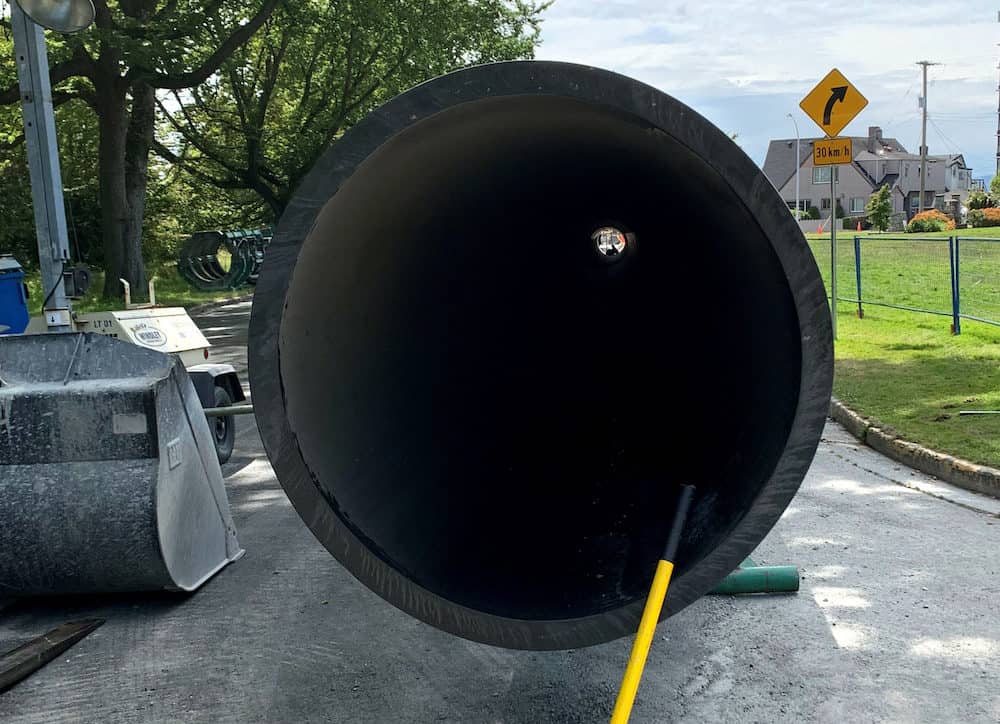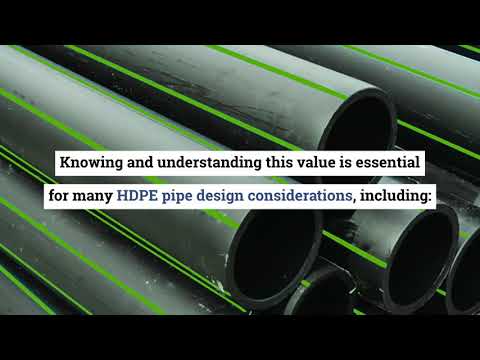Guide to Standard Dimension Ratio (SDR)

What’s the Difference Between SDR and DR?
The terms Standard Dimension Ratio (SDR) and Dimension Ratio (DR) are often used interchangeably, but there’s a subtle distinction. Both describe the ratio of a pipe’s average outside diameter (ODavg) to its minimum wall thickness (tmin) for pipe made to outside diameter ‘OD’ control. A standard dimension ratio (SDR) is derived by adding one to the pertinent number selected from the ANSI Preferred Number Series 10 as shown in the table below. Pipe can be manufactured to any SDR or to any DR between the listed SDR’s. Manufacturers prefer to make pipe to a listed SDR to simplify production.
Knowing the pipe average OD and DR allows one to calculate the allowable minimum wall thickness. For example, what is the allowable minimum wall thickness for a DR11 and DR17 IPS 14 pipe? An IPS 14 pipe has an average OD of 14-inches; for DR11 the allowable minimum wall thickness is 14/11 = 1.273 inches, and 0.824 inches (=14/17) for DR17. The wall thickness tolerance for MDPE and HDPE pipe production is from the DR minimum wall thickness to plus 12%. The inside diameter of MDPE and HDPE pipe varies based on the allowable tolerances for OD and wall thickness of the manufacturing specification. See WL102 for IPS pipe dimensions and WL104 DIPS pipe dimensions.
The DR of all MDPE and HDPE pipe manufactured by WL Plastics is in the print line on the pipe.
The pipe dimensional ratio is a key parameter used to determine a pipe’s pressure rating. The higher the DR, the thinner the pipe wall is relative to its average OD. Conversely, the lower the DR , the thicker the pipe wall is relative to its average OD . Pipe wall thickness is one of the factors which determines its pressure rating.
For example, SDR 17 pipe has a thinner wall and lower pressure rating than SDR 11 pipe. Choosing the correct DR is critical for engineers and designers working with MDPE pipes & HDPE pipes,.
When designing a piping system with MDPE or HDPE, first choose a pipe DR based on the required pressure rating. A lower DR (thicker wall) can be used if required for the proposed installation application. For example, a lower DR may be required to increase the allowable tensile load (ATL) for a horizontal directional drill (HDD) installation.
Learn More About SDR and HDPE & MDPE Pipe Standards at WL Plastics
For help in selecting a DR and manufacturing specification, contact the experts at WL Plastics. With decades of experience in HDPE & MDPE pipe manufacturing for industrial, municipal, and energy sectors, WL Plastics can help you identify the best pipe specifications for your project requirements.
